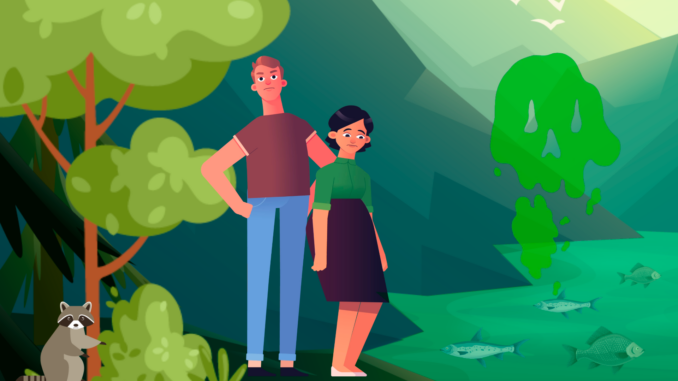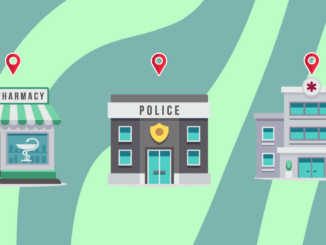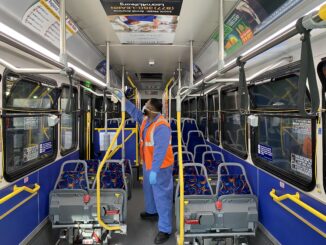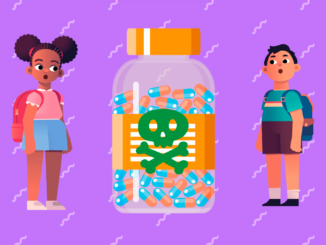
Safe disposal drug take-back bins help to combat opioid crisis and keep dangerous drugs out of environment, waterways
by Debbie Arrington
Solving problems; that’s what government does. And if a program can create solutions to multiple issues, so much the better.
That’s the result of an innovative safe disposal drug take-back bin program that allows California residents to dispose of unwanted, unneeded, or expired drugs at convenient locations for free. These take-back bins not only allow consumers to dispose of drugs safely, but they get those drugs out of circulation—away from children or potential abusers.
If flushed down the toilet, those dangerous drugs also can pollute the community water supply, presenting further problems. Instead, drugs collected from the take-back bins are burned at waste-to-energy facilities to produce renewable energy—another plus.
“Unwanted medications pose significant problems for California primarily due to their potential for abuse and environmental harm.”
Ann Carroll, Spokesperson, California Department of Health Care Services
“Unwanted medications pose significant problems for California, primarily due to their potential for abuse and environmental harm,” says Ann Carroll, spokesperson for California’s Department of Health Care Services (DHCS). “The accumulation of unused prescription drugs, particularly opioids, contributes to the opioid crisis. Unused medications left in homes can be misused or diverted for illegal purposes, exacerbating public health issues. Additionally, improper disposal of these drugs can contaminate soil and groundwater, posing environmental risks.”
These convenient bins are a part of the California Statewide Drug Take-Back Program, which was funded by a $3 million DHCS grant and—specifically—its Medication Assisted Treatment program aimed at combating the opioid crisis.
“The project aimed to address the opioid crisis by increasing prevention measures against misuse of prescription medications and expanding the options for the public to discard unwanted, unused, or outdated prescription drugs and other medications,” Carroll explains.
That grant was a precursor to Senate Bill 212. Signed into law by then-Gov. Jerry Brown in 2018, SB 212 was the culmination of a years-long effort by the California Product Stewardship Council and its authors, State Sen. Hannah-Beth Jackson and Assembly members Phil Ting and Adam Gray.
“In 2021, CalRecycle established a stewardship program for the proper collection and disposal of pharmaceutical drug waste,” Carroll says. “Under the stewardship program, a manufacturer or distributor of covered drugs or sharps [needles, syringes, etc.] is required to establish and implement a stewardship plan for covered drugs or for sharps.”
This program works on multiple levels; people need to get rid of unwanted medications and communities need it done safely.
“The program raised awareness about the importance of ecologically sound medication disposal and informed them where they could find the installed bins,” Carroll says. “Furthermore, by reducing access to unwanted household medicines, the program helped prevent drug abuse and accidental poisoning.”
The first phase of the take-back bin program had an immediate impact.
“Nearly 250 bins were placed throughout California as part of this program, greatly expanding the network of bins across the state of California and providing all Californians access to free, safe medicine disposal,” Carroll says. “Between the start of the program [Nov. 8, 2018] and March 31, 2021, 18,250 pounds of medications were collected or destroyed.”
Since then, the number of bins has more than quadrupled. In 2023, California had 1,046 authorized collection sites with 882 located inside retail pharmacy locations, according to the 2024 annual report of the MED-Project. (MED stands for “medication education & disposal.”)
“The program’s goal was to increase access to and availability of medication take-back services,” says Carroll. “The project was designed to incorporate all services provided through onsite collection receptacles located in Drug Enforcement Administration (DEA)-approved locations, such as California-licensed pharmacies, law enforcement agencies, hospitals, or clinics with onsite pharmacies, and drug distributors [licensed wholesalers and third-party logistics providers registered with the DEA as collectors and licensed in good standing with the Board of Pharmacy.”
More than 90% of Californians live within 15 miles of a take-back bin site, says the MED-project report. Additional locations are in the works. Residents in rural counties may send unwanted drugs to a disposal site via mail.
“The California Product Stewardship Council, in partnership with DHCS, purchased and distributed 100,000 medication mail-back envelopes, which allowed a consumer to return prescription medications to an authorized DEA destruction location,” Carroll says.
An important part of the program is getting the word out so people know it’s available. According to a recent survey, 26% of Californians say they’ve used take-back program options with another 61% intending to use the program.
Says Carroll, “The program educated community members about how to safely dispose of medications.”
To find a bin near you, go to medtakebackcalifornia.org.
Read more stories about med bins in California’s Central Valley, High Desert, Los Angeles/Ventura, North Central Valley, North Coast, Orange County, Rural Mountains, San Diego, South Central Valley.
Brought to you by the California Drug Take-Back Program and the California Product Stewardship Council.
Recent facebook posts from California Product Stewardship Council

The California Product Stewardship Council (CPSC) is a powerful network of local governments, non-government organizations, businesses, and individuals supporting policies and projects where producers share in the responsibility for managing problem products at their end of life.
CPSC is California’s thought leader and expert on Product Stewardship and the Extended Producer Responsibility (EPR) movement.
EPR enjoys the support of more than 26 million Californians. That’s nearly 70% of the state's population! Nearly 150 resolutions have been passed by California local jurisdictions and organizations supporting a more sustainable and toxic free environment through product stewardship. CPSC works closely with companies who have redesigned products for reuse as well as those who have established pilot or permanent collection programs with some sharing of costs with others in the product chain.
California Product Stewardship Council



